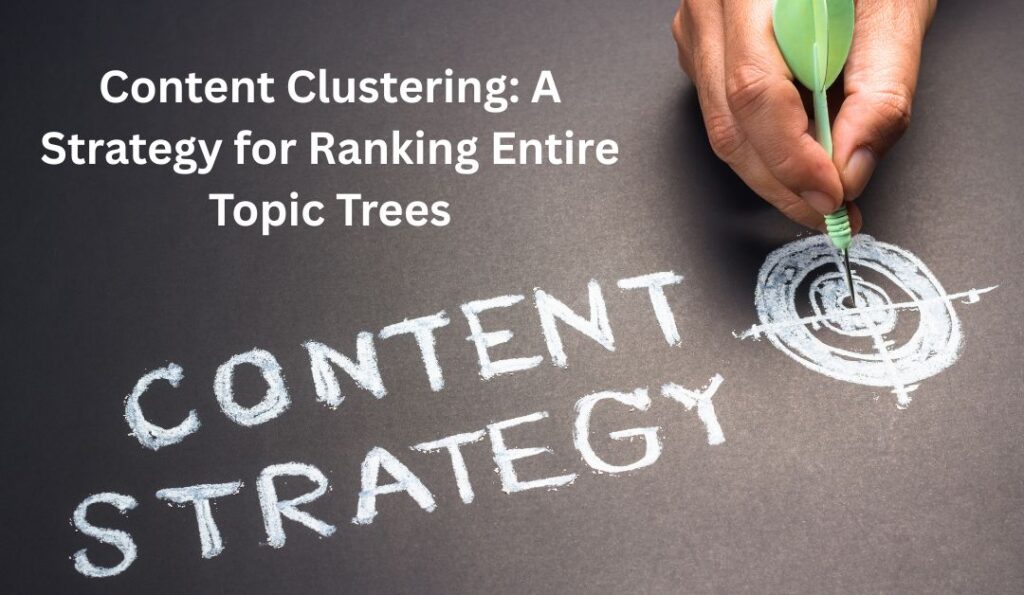Imagine you have a big tree, and you want every branch to grow strong and reach the sunlight. In the world of websites, that tree is your main topic, and each branch is a subtopic you write about. Content clustering is like planting a strong root system—it helps search engines and readers see your whole topic clearly, so every page grows tall together.
What Is Content Clustering?
Content clustering is a way to organize related pages on your website. At the center is a pillar page that covers a broad topic. Around it are cluster pages, each focusing on a more specific aspect of that big topic. All cluster pages link back to the pillar and often link to each other. This web of links tells search engines that your site has deep knowledge on that subject.
As an example, imagine a digital marketing agency in Chennai writing about “Online Advertising.” The pillar might be “The Complete Guide to Online Advertising,” and clusters could include “How Google Ads Work,” “Best Practices for Social Media Ads,” and “Measuring Ad ROI.”
Why Content Clustering Matters
- Better User Experience
When visitors arrive, they see one main guide and can jump to the part they need. They don’t have to hunt around. This happy journey keeps them on your site longer. - Clear Topic Signals for Search Engines
Search engines like Google look for organized, well-linked content. Clusters show you’re covering a topic thoroughly. This can lead to higher rankings for your entire topic area. - Easy Updates and Expansion
Instead of rewriting one giant page, you update a specific cluster when new information appears. This keeps your content fresh without a major overhaul. - Improved Internal Link Structure
By linking clusters back to the pillar, you spread “link juice” evenly. Every page benefits from the strength of the pillar and vice versa.
How to Build Your Content Cluster
1. Choose Your Core Topic
Pick a broad theme that’s important to your audience. It should be general enough for a detailed pillar but specific enough to attract interest. For example, “Email Marketing Basics.”
2. Keyword Research
List related keywords and questions people ask. Use tools like Google’s “People also ask,” or a keyword planner. Note long-tail questions such as “How to write an email newsletter that converts?”
3. Create the Pillar Page
Write a comprehensive guide covering your core topic. Include an overview of each subtopic you plan to expand. Keep it engaging, with clear headings and simple explanations.
4. Draft Cluster Pages
Each cluster page dives deep into one aspect. If your pillar is “Ultimate Guide to Gardening,” clusters could be “Choosing the Right Soil,” “Watering Techniques,” and “Pest Control for Beginners.”
5. Link Strategically
- From pillar to clusters: Place clear links under a “What You’ll Learn” or “Related Topics” section.
- From clusters to pillar: Add a “Back to Guide” link at the top or bottom.
- Between clusters: When relevant, link clusters to each other. For instance, “After learning how to choose soil, check out our watering tips.”
6. Maintain a Consistent Style
Use the same tone, formatting, and design across all pages. This visual and verbal consistency helps readers feel they’re still in the same “neighborhood” of your website.
Tools to Help You Cluster
- Mind-Mapping Software
Programs like MindMeister or XMind let you visualize your topic tree before writing. - SEO Platforms
Tools such as Ahrefs and SEMrush offer topic cluster reports and keyword suggestions. - Internal Link Checkers
Plugins for WordPress (like Yoast SEO) or stand-alone tools highlight missing internal links. - Content Calendars
Use Airtable or Google Sheets to plan your pillar and cluster publication schedule.
Common Mistakes to Avoid
- Too Many Clusters Too Quickly
It’s tempting to write dozens of cluster pages at once. Start with a few high-priority pages and build gradually. - Weak Interlinking
If cluster pages don’t link back to the pillar, you lose the SEO benefit. Always double-check your links. - Shallow Content
Cluster pages should offer real value. A 200‑word stub won’t convince readers or search engines. Aim for at least 500 words with actionable tips. - Keyword Stuffing
Don’t force your keywords into every sentence. Keep the language natural—focus on clear explanations first.
Measuring Your Cluster Success
- Organic Traffic Growth
Track whether traffic increases to both the pillar and cluster pages over time. - Keyword Rankings
Use an SEO tool to see if you’re ranking for more topic-related keywords. - Engagement Metrics
Look at average time on page and bounce rate. Lower bounce rates often mean visitors are clicking through to cluster pages. - Conversion Rates
If your goal is newsletter sign-ups or product sales, check if clustering leads to more conversions.
Bringing It All Together
Content clustering isn’t magic, but it’s a smart way to show search engines and readers that you’re an authority. By thoughtfully organizing your pages—starting with a strong pillar and supporting clusters—you help everyone navigate complex topics with ease. Over time, your site will look like a well-tended garden, where each plant (page) gets the nutrients it needs to grow tall.
Thinking of building a cluster strategy for your own website? Whether you’re a local blogger or a big brand, you can start small: pick one topic, map out a few clusters, and see how visitors respond. If you need expert guidance, remember that top-notch SEO services in Chennai can help you plan, write, and link your way to the top of search results.
- Content Clustering: A Strategy for Ranking Entire Topic Trees
- Boost your SEO with content clustering! Learn how pillar pages and clusters improve rankings, user experience, and topic authority on your website.
- Digital Marketing in Chennai, SEO services in Chennai
Related posts:
 Machinery and Equipment Industry Email List: Unlocking Opportunities for B2B Marketing Success
Machinery and Equipment Industry Email List: Unlocking Opportunities for B2B Marketing Success
 Essentials Hoodie with Bold Logo – A Modern Streetwear Icon for Everyday Style”
Essentials Hoodie with Bold Logo – A Modern Streetwear Icon for Everyday Style”
 Why Investing in Charlotte SEO Is Crucial for Business Growth
Why Investing in Charlotte SEO Is Crucial for Business Growth
 ways to oversee living where you work ways to oversee living where you work
ways to oversee living where you work ways to oversee living where you work
 Retirement Arranging in Singapore: Retirement Arranging in Singapore:
Retirement Arranging in Singapore: Retirement Arranging in Singapore:
 Transform Your Business with Lahore’s Top Digital Services | Hiline Digital
Transform Your Business with Lahore’s Top Digital Services | Hiline Digital
 Elevate Your Web Applications with Professional Angular JS Development Services
Elevate Your Web Applications with Professional Angular JS Development Services
 Comme des Garcons and Sp5der: Streetwear’s Most Buzziest Brands of 2025
Comme des Garcons and Sp5der: Streetwear’s Most Buzziest Brands of 2025







